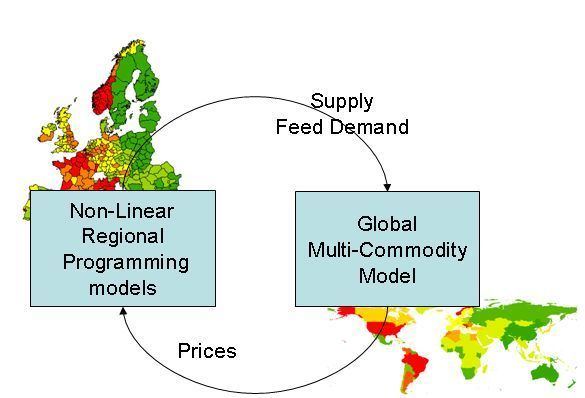 | ||
The CAPRI (Common Agricultural Policy Regionalised Impact) model is a tool for exante impact assessment of agricultural and international trade policies with a focus on the European Union. As an economic partial comparative static equilibrium model for agriculture, its core consists of two interlinked modules: about 250 regional aggregate programming models covering the EU27, Norway and Western Balkans at the NUTS 2 level and a global spatial multi-commodity model for agricultural commodities, which together allow calculation of a wide range of economic and environmental indicators. A spatial downscaling component allows impact assessment at the 1x1 km grid level for EU27. CAPRI is written in GAMS and steered by a Graphical User Interface realized in Java.
CAPRI was developed and improved in a suite of EU funded research projects (CAPRI, CAP-STRAT, CAPRI-Dynaspat). Past applications include analysis of different reform steps of the Common Agricultural Policy such as Agenda 2000, Decoupling (2003) or sugar market reform (2005-2006) and environmental impact analysis such as a trading scheme for Green House Gases from agriculture.
CAPRI is maintained by a network of different European research institutions and co-ordinated by a team at the Institute for Food and Resource Economics at the University of Bonn. Its main client is the EU Commission (Directorate-Generals for Agriculture and Rural Development and for the Environment).
